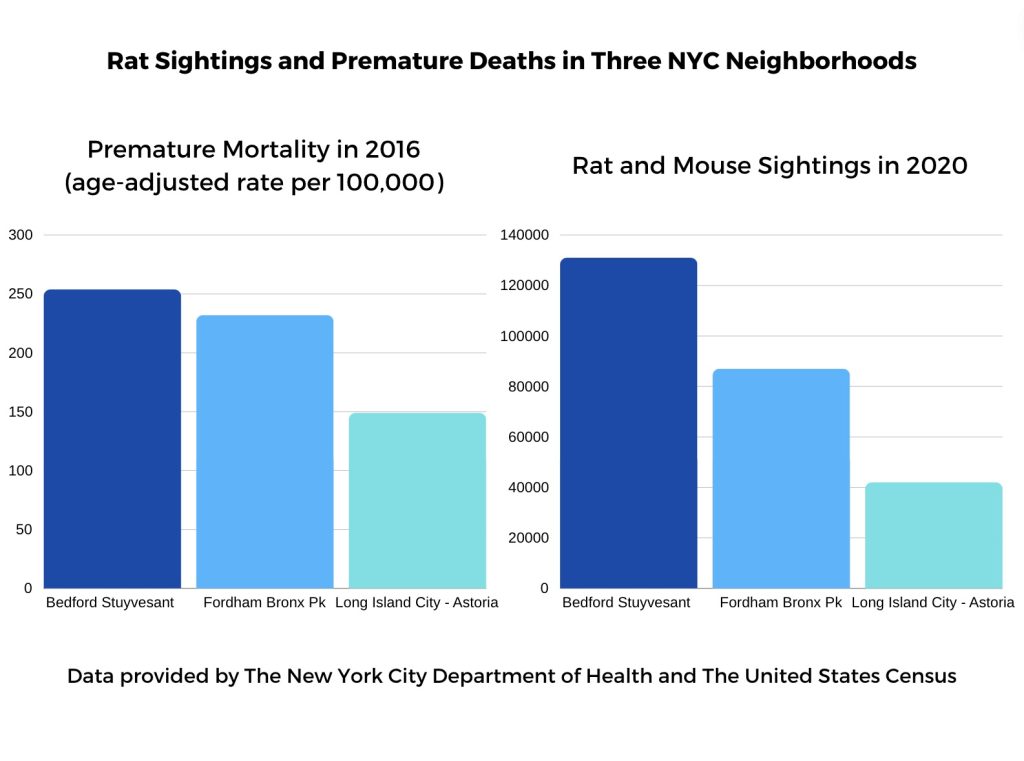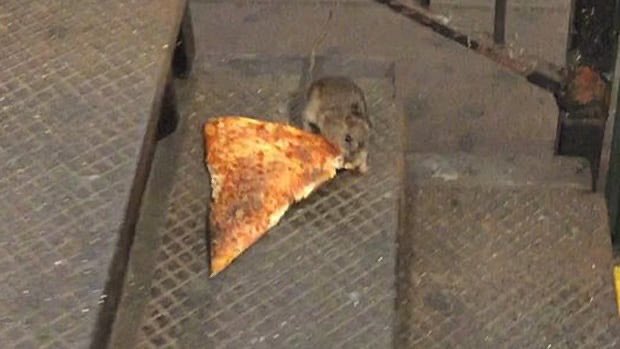By Annabelle Underwood
A video of a rat dragging a slice of pizza down a subway station staircase in New York went viral in 2015 after being uploaded to Instagram. The viral video became a popular but short-lived meme called “Pizza Rat” that has since been mostly forgotten. While comedic, the video connects to a serious environmental issue in New York: the overpopulation of rats.
The problem has been a high priority for Mayor Eric Adams who on Sunday, July 28 announced the NYC Rat Pack, “New York’s elite squad of dedicated anti-rat activists.” The participants will learn how to tackle the surplus of rats in the city and volunteer in a local rat mitigation service event.
Why are there so many rats in New York?
Experts say rats immigrated to the Americas on the same ships as the first European settlers.
A recent ecological study estimated about three million rats reside in New York City, which is one million more than the previous estimate from 10 years ago.
Rats thrive in New York for several reasons, but the main culprit is how the city manages garbage.
A sanitation worker strike in 1968 led to the switch from metal cans to plastic bags. The change was intended to make it quieter and easier for sanitation workers to pick up and carry trash between parked cars. At the time, people believed the bags would be more effective at preventing rats, but in reality, it is much easier for pests to break into plastic bags than a sealed metal container.
The problem has worsened over the past decade due to climate change, the proliferation of outdoor dining spaces during the pandemic and budget cuts in the Sanitation Department that reduce services necessary for preventing rat infestations.
Are rats dangerous to your health?
Rats can transmit up to 55 diseases, according to Urban Rodentologist Bobby Corrigan on PBS. Rat-bite fever, salmonellosis and E coli are just a few examples.
The most infamous example of a public health crisis caused by rats and their fleas is the bubonic plague in the fourteenth century, which killed an estimated 50 million people in Europe.

Rats continue to transmit disease in modern times. Earlier this year the New York City Department of Health and Mental Hygiene announced a health advisory after a sudden uptick in cases of human leptospirosis, a disease spread through contact with rat urine that causes flu-like symptoms.
Rats can also spread diseases to humans through bites, droppings entering food or water and indirectly through the ticks and fleas they host.
Aside from infection, some rat infestations can damage electrical wiring, plumbing and infrastructure, placing the residents at greater risk of injuries from a building collapse.
Are rats dangerous to the environment in New York?
Aside from the public health risks of rats, there’s another pressing environmental issue. Rodenticides, commonly found in bait boxes all over the city, can endanger native wildlife.
Non-target animals like chipmunks, or even pets and children can fall victim to the highly toxic bait.
The lethal chemicals can also enter the food chain through secondary exposure. For example, since many of these poisons have a delayed effect, poisoned rats can leave the immediate area and become a food source for other wildlife. That’s exactly how New York City predators like the barred owl and red-tailed hawk or scavengers like the bald eagle or opossum can become secondarily poisoned.
One high-profile example of this phenomenon was Flaco, the Eurasian eagle-owl who escaped from Central Park and died after crashing into a building. At the time of his death, he had been exposed to four different rodenticides that experts said could have contributed to the fatal incident and would have eventually led to a slow and painful death had he survived those injuries.
There has even been some evidence that rodenticides are bioaccumulating in aquatic wildlife, according to a recent study in Germany.
Climate change has also complicated the issue because some studies show that rats can reproduce later in the season as winters get warmer, contributing to the growing overpopulation.
Which New York community is affected most by rats?
Neighborhoods with low education rates, vacant residential structures and proximity to public spaces and subways are at greater risk for increased reports of rat encounters, according to one study. Also, communities that don’t have as many of the newer enclosed trash bins, compared to the traditional open wire bins usually report more rats.
The neighborhoods with the highest reports of outdoor rat sightings in 2020 were Union Square, Central Harlem, Williamsburg, Washington Heights, East Harlem, the Upper West Side and the South Bronx.
Low-income urban communities often suffer the most physical and mental health consequences from rats, and residents can feel neglected when resources aren’t allocated to address local hygiene issues like rats, according to a study in Vancouver, Canada. These communities often don’t have the same amount of time, money and resources to demand better sanitation services as wealthier neighborhoods do. Also, migrants and refugees or New Yorkers experiencing homelessness and living in poverty may not be able to afford medical attention if they contract a disease from a rat.
What’s being done to fix the city’s rat problem?
Mayor Adams appointed a Rat Czar to address the issue last spring, and she’s been focusing on controlling the large populations in “rat mitigation zones” like East Harlem.
A new regulation from the New York City Department of Sanitation was enacted in March that mandates all commercial trash be placed in lidded containers for curbside collection. Another regulation was announced in July mandating that residential buildings with one to nine units start using bins for trash collection by November.
How can I deter rats in my community?
Here are some steps you can take to prevent rat infestations:
- Report rat sightings, illegal trash dumping and missed trash collection to 311.
- Dispose of trash in rat-proof metal bins instead of plastic bags or bins that rats easily chew through.
- Repair any cracks or holes in sidewalks, doors and building foundations.
- Get involved with your community board or local politics to advocate for improved sanitation services.
- Attend a free two-hour “Rat Academy” training course hosted by the New York City Department of Health or volunteer to join the NYC Rat Pack to learn more about rat management.



